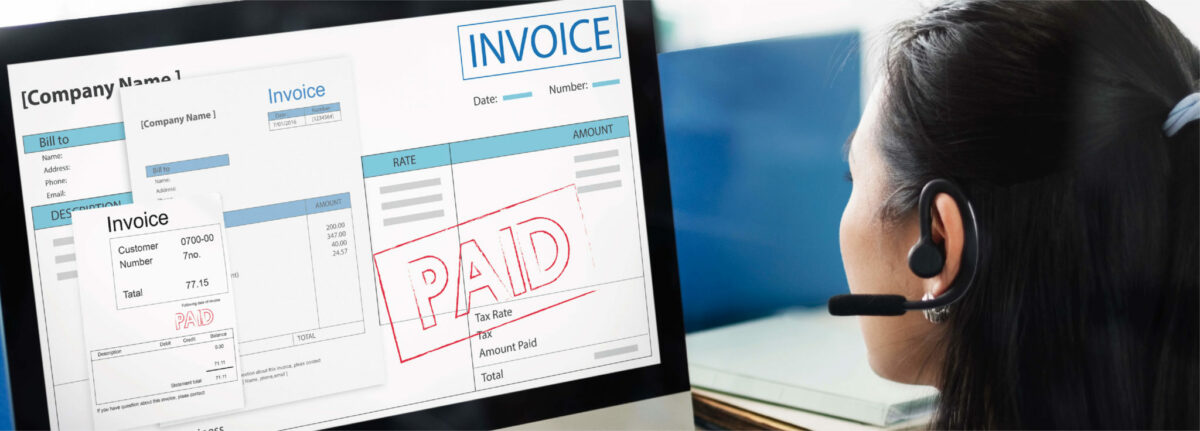How to make the user experience of your company successful?

The user experience is one of the strongest trends today for the digital transformation of companies. We teach you the basic principles so that it is strategic, comprehensive and differentiating from the competition. Today’s customer wants everything faster, uses digital channels all the time and would do everything from their mobile if they could. For […]
Cases that demonstrate the importance of managing risks such as money laundering in companies and societies

Have you prioritized the prevention of money laundering and terrorist financing risks in your company? Learn about four stories that will show you the importance of managing transparent, safe and reliable processes in your company. Surely you know that there are many ways to protect your business from money laundering, but are you aware of […]
Electronic invoice as security: everything you need to know

Electronic invoicing is growing more and more in Colombia. One of its added values is the new resolution that validates it as a security. We tell you what this new opportunity is about. The National Government regulated the electronic invoice as a security title through decree 1154 of 2020. This resolution intends to electronically register […]
What is electronic factoring and why can it boost my company’s finances?

Electronic factoring is a tool that gained strength in Colombia with the implementation of the electronic invoice. Here we tell you why this is an opportunity to add liquidity to your company’s capital and facilitate traceability and transparency in the purchase and sale movements of your business. With the advent of new digital reorganization technologies […]
Automation, data and personalized experiences: Banco Falabella success story

In order for companies to carry out increasingly reliable, transparent and secure businesses, it is necessary to correctly manage and prevent risks of money laundering, financing of terrorism and financing for the proliferation of weapons of mass destruction (LA/FT/FPWMD ). Currently, there are companies obliged to establish a Comprehensive LA/FT/FPADM Risk Self-control and Management System […]
Electronic payroll, an intelligent automation ecosystem

Both billing and electronic payroll are part of a new online ecosystem that allows companies to optimize their digital transformation processes. Beyond improving the tax collection base, it evolves the settlement or portfolio management systems, reducing times and costs in the operation. Electronic payroll is an automated solution that allows greater traceability of information, control […]
Automation, data and personalized experiences: Banco Falabella success story

In order for companies to carry out increasingly reliable, transparent and secure businesses, it is necessary to correctly manage and prevent risks of money laundering, financing of terrorism and financing for the proliferation of weapons of mass destruction (LA/FT/FPWMD ). Currently, there are companies obliged to establish a Comprehensive LA/FT/FPADM Risk Self-control and Management System […]
Electronic invoicing, the first step for the transformation of your processes

Business intelligence, process automation and cost reduction in the operation and in times, are some of the benefits of electronic invoicing. Here we share its advantages with Federico Giraldo, Director of Electronic Invoicing for the Chain. “Today is closing day and this invoice is not ready” or “I must wait more than 60 days to […]
The metaverse: a world of opportunities for your company

Immersive technologies like virtual reality or augmented reality today allow us to experience many possibilities in the metaverse, and your company cannot be left behind. We tell you how your brand can enter this world. And what is the metaverse? It is a real world in virtuality, where you can interact with other people through […]
Cybersecurity in the metaverse

The metaverse is possibly one of the biggest revolutions of the moment, with an exponential volume of business for the next few years. This, however, also brings new cybersecurity risks. We tell you everything you need to know. Aspects of technology such as security have made companies around the world join forces to cooperate, such […]
10 digital transformation trends you should be aware of by 2023

Make a goal! So you can face the new business challenges in 2023 At Cadena we are official fans of unstoppable companies, which is why we support their digital transformation so that they are more competitive in environments as changing as the current ones. Here we present the lineup of the 10 trends that are […]

